When we released our AMD EPYC 3201 benchmarks and review, many users inquired as to our thoughts on the test platform. We have had some time with the Supermicro M11SDV-8CT-LN4F and found something unique. While the Supermicro M11SDV-8C-LN4F is designed for all-out performance, the “8CT” takes a more balanced approach. It has a modest price premium over the four core parts, sips power, and has a surprising amount of performance.
As we have mentioned previously if you are a vendor looking to dual source your CPU suppliers for x86 operation, the AMD EPYC 3201 is a drop-in replacement using modern OSes. With security vulnerabilities like Foreshadow that only impacted Intel CPUs, having a second option qualified can help mitigate future vulnerabilities. It also can help to keep pricing competitive.
Test Configuration
Here is our basic configuration for this class of CPU:
- Motherboard: Supermicro M11SDV-8CT-LN4F
- CPU: AMD EPYC 3201
- RAM: 4x 16GB DDR4-2666 ECC RDIMMs
- SSD: Intel DC S3710 400GB
- SATADOM: Supermicro 32GB SATADOM
The CPU itself supports up to 512GB of RAM, in a 4x 128GB configuration. That is as much as the Intel Xeon D-2100 series platforms and more than both the Intel Xeon D-1500 and Intel Atom C3000 series embedded platforms.
We are going to have reviews down the stack over the course of the next few weeks. Practically, the Supermicro M11SDV-8C-LN4F, M11SDV-8C+-LN4F, M11SDV-8CT-LN4F, M11SDV-4C-LN4F, and M11SDV-4CT-LN4F are all very similar. We have a short video overview of the family.
You will see this test setup more in the future and it is similar to our Intel Xeon D review platform. We also spent time plugging in devices to ensure the NVMe and PCIe lanes worked as advertised. We also tried up to 128GB of RAM in 4x 32GB configurations in our testing.
Supermicro M11SDV-8CT-LN4F Overview
Measuring 6.7″ x 6.7″ the Supermicro M11SDV-8CT-LN4F is a compact mITX motherboard.
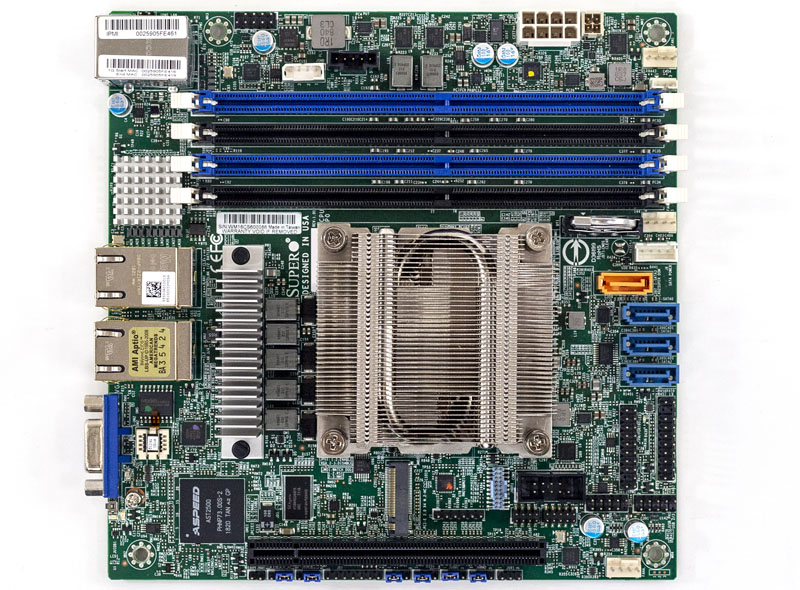
At the heart of the M11SDV-8CT-LN4F is the AMD EPYC 3201 CPU. This is the lowest power option in the current AMD EPYC 3000 line with a 30W TDP. Even the quad-core CPUs in the EPYC 3000 line have higher TDP values. The CPU itself if cooled via passive airflow from front to rear. The passive heatsink requires cooling from fans via the chassis.
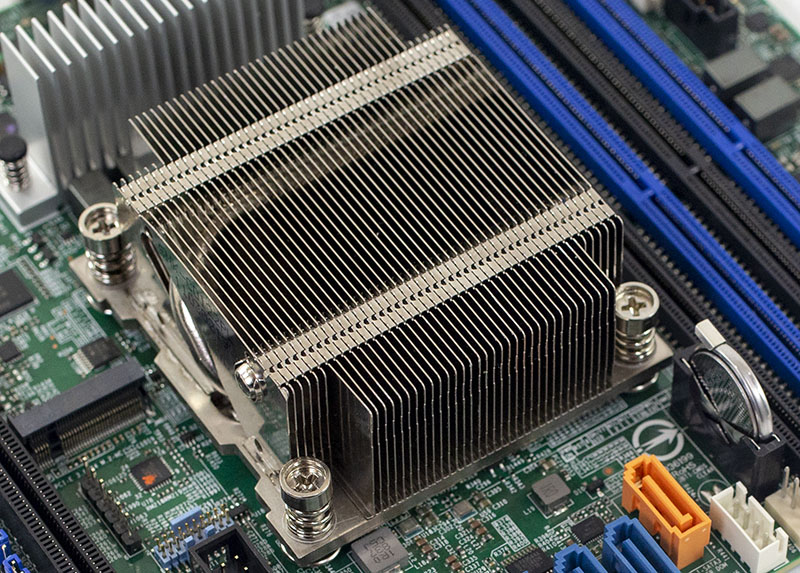
Here is a lscpu output for the EPYC 3201:
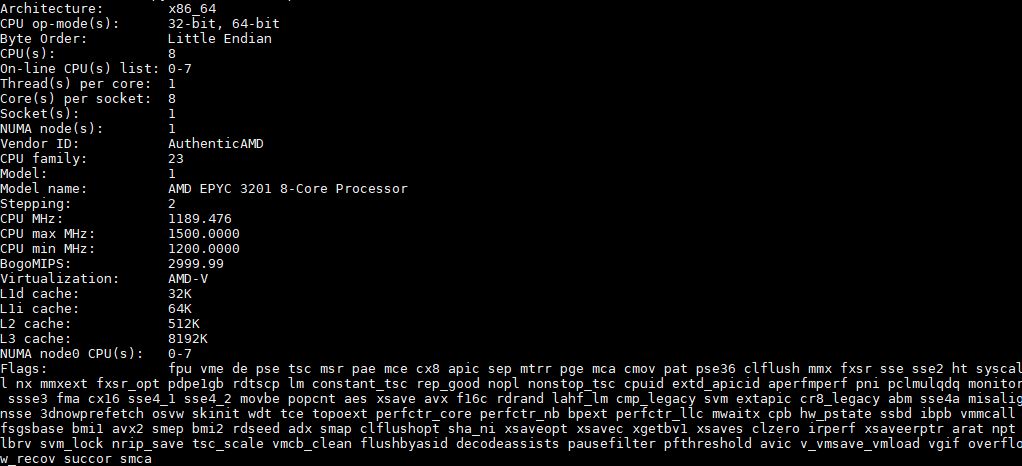
One of the trade-offs the platform makes to maintain lower power ratings is that it uses lower speed memory. It can still handle four 128GB DDR4 DIMMs for a total of 512GB. At the same time, the maximum rated memory speed is 2133MHz, not 2666MHz like the rest of the lineup. Lower memory speeds help to lower the platform TDP.
For M.2 connectivity there is a PCIe 3.0 x4 M.2 2280 (80mm) slot for SSDs. Many SSDs with power loss protection are 110mm. We see this M.2 slot used mostly for a read cache or boot device in systems.
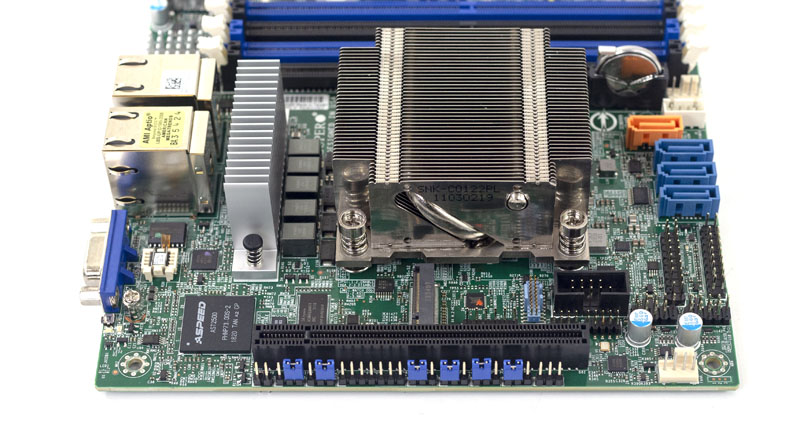
Likewise, there is SR-IOV and IOMMU support on the platform. We also wanted to note for our readers that the PCIe x16 slot is capable of running in x16, x8x8, or x4x4x4x4 mode. The 4×4 mode is useful if one, for example, wanted to use four PCIe NVMe SSDs:
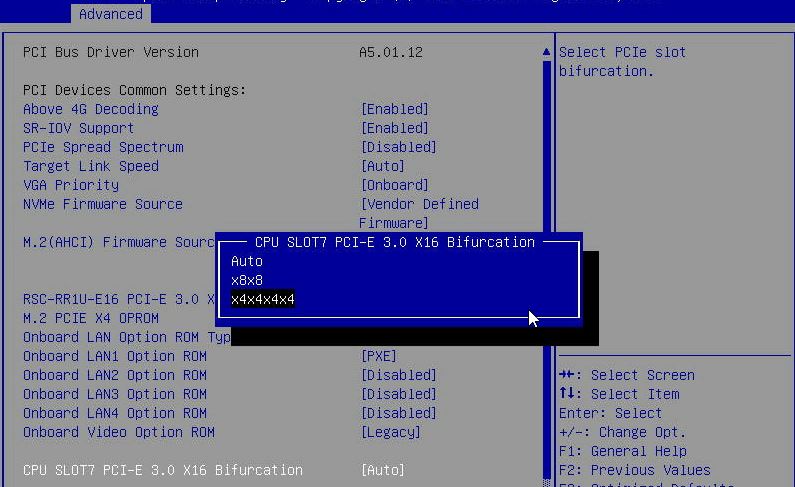
The Supermicro M11DV-8CT-LN4F has a standard front panel header, COM port, and USB 2.0 headers. You will not find a Type-A USB internal header nor a USB 3.0 front panel header. From the look of the motherboard, there does not seem to be room for those features.
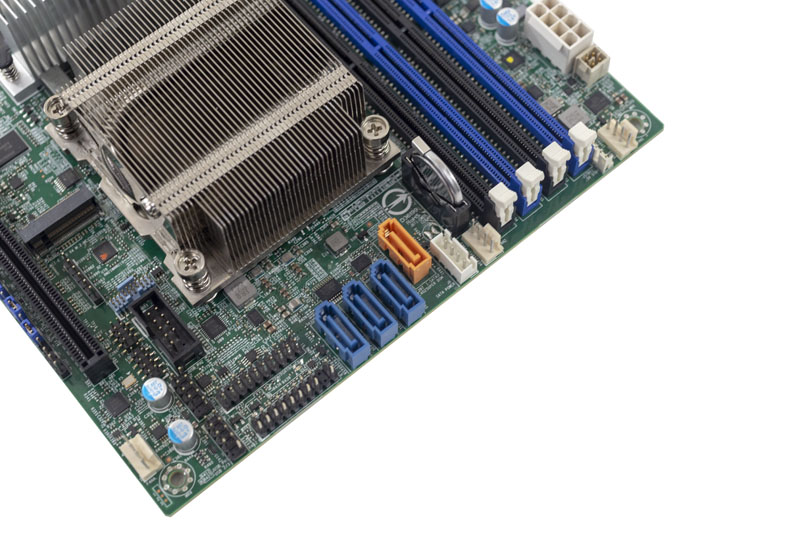
We also see four 7-pin SATA ports. One is an orange/ gold port for SATADOMs. In that port, a SATADOM does not need an additional power cable to operate which is handy in embedded applications. That white header between the SATADOM port and the battery is a power connector. When on DC power, Supermicro makes cables for that header that can power four hard drives/ SSDs.
The motherboard itself has three 4-pin PWM headers. That allows for a redundant SoC cooling path as well as a peripheral fan. You will also notice a single 8-pin power header. Like the other initial members of the M11SDV family, Supermicro sacrificed the traditional ATX 24-pin connector to save space. The company already did this on some of their Intel embedded motherboards.
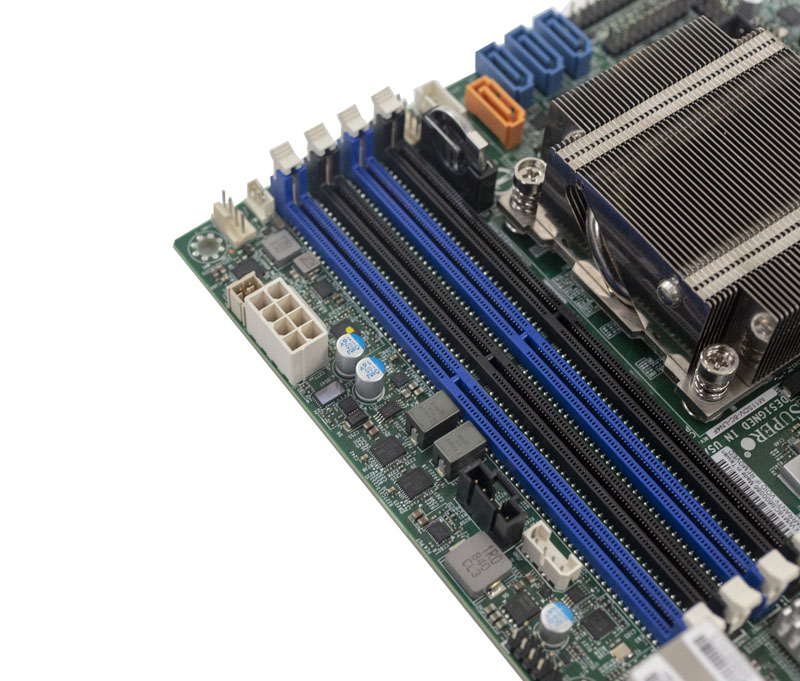
The rear I/O is comprised of a legacy VGA port on the right side and two USB 3.0 ports plus a management port on the left. Overall I/O pinout is compatible with a wide range of Supermicro embedded products so those that have systems based on Intel embedded products can likely use the same I/O shields and chassis with the Supermicro M11SDV-8CT-LN4F. You can also use this exact same I/O with all four of the launch M11SDV platforms to have four CPU levels in a similar appliance.
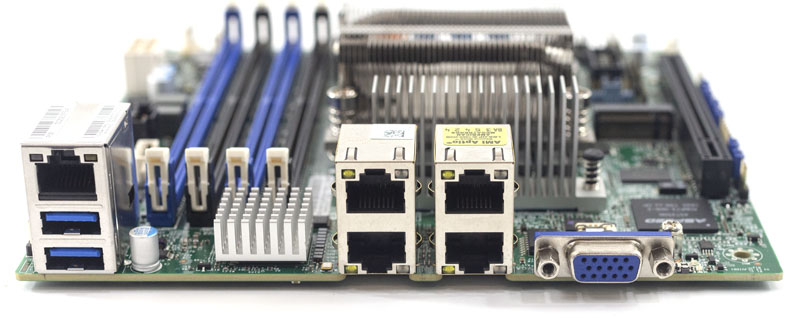
Networking is provided by an Intel i350 quad port NIC. This is a 1GbE NIC that supports higher-end features like SR-IOV. At the same time, Supermicro is not leveraging the AMD EPYC 3101’s quad 10GbE NIC. While we wanted to see a 10GBE solution, we understand the conservative design decision for a first-generation embedded product. The Intel i350 is well supported by every major OS vendor and there are many firewalls and embedded appliances that do not need 10GbE.
Next, were are going to look at the Supermicro M11SDV-8CT-LN4F management and system topology. We will then show performance figures along with power consumption and our final thoughts.

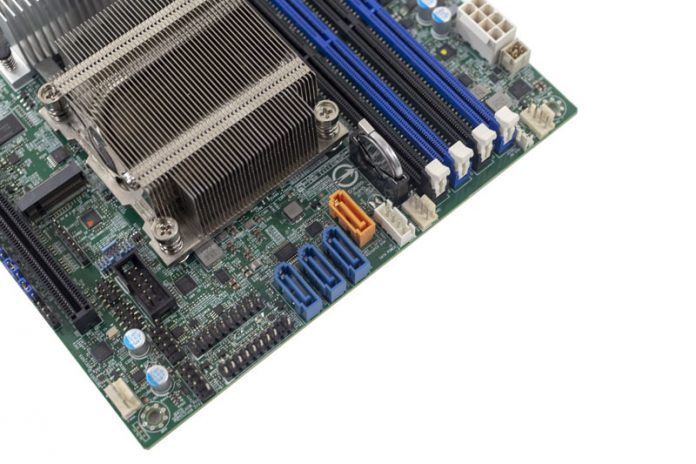



Hi Patrick, LOVE these reviews and glad to see a website focused to the whitebox datacenter/homelab folks.
I always wondered why you don’t run PassMark benchmarks? I know they aren’t the most representative of real-world perf, but the Single Thread Rating is, in my opinion the best way to compare IPC.
Sadly no 10GbE, seems a bit of a waste – non of the embedded EPYC solutions by Supermicro support this.
There is no excuse for not offering the 10G option, it’s mandatory for a server board these days. And for embedded use, it’s simply overkill in most cases. They completely missed the correct positioning, as usual. Nothing new, they completely killed Denverton by giving up the flexible IO and offering unreasonable options. It seems they cannot even design a compact chassis: what the hell is this CSE-E301 pie? What about designing a decent compact 1.5U or a 2U with 60mm/80mm fans and a PCI card slot at the top like on any server on earth? And maybe add an AC/DC board on the side? I’m not asking for something as fancy as a Mac Mini, but I mean… is it too difficult for you guys? What’s wrong with you? What’s wrong? I wish the were alternative brands.
Any opinions on getting this board vs waiting for Supermicro Xeon D-1600 options? Is the D-1612 likely to be performance competitive with this board, but with 10GbE?
I’m wondering as well. Also, when can we expect Intel Denverton successors? I’m in the market for a new home server / NAS but I’d like to buy future proofed HW.
Can anyone tell me if this board / cpu combo has h265 hardware acceleration?
It does not. There is no integrated GPU onboard.
What for RAID Controllers are Working ?
I am try to use 3Ware (LSI) 9690SA Series also 9590SE Series but no chance
Is the LSI SAS9207-8i working stable or any others ?